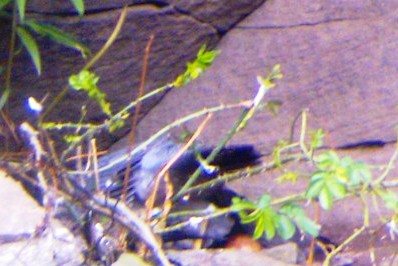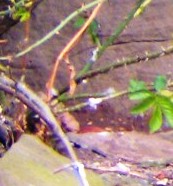Egg evidence
This week we were hoping to be celebrating our first eyass sighting of the season. Instead we have been getting excited about finally getting a good view of an egg on the eyrie. Click here for video.
Now in the last couple of days Ive seen an egg at least 4 times. Ive only seen 1 egg each time, but one time it seems to be typically peregrine speckled orange/brick colour and at other times appears a very deep red/maroon colour. Although I cant say for sure, this would suggest there is possibly 2 eggs after all. Ill post 2 pictures below, although the difference is not very distinctive on the computer. It is much more apparent with the naked eye. Peregrine eggs, like most birds can vary widely in pigment from dark at first to very pale to almost white for the last egg. A bit like a printer running out of ink.


So enough about these eggs, what about the chicks? As mentioned previously, the peregrines have chosen to nest on the highest possible ledge they could, making it very difficult to see exactly when the eggs where laid. Our interpretation is they were laid on or around 1st April ( the irony is not lost on me) with the last egg speculated to be laid the end of that week, around 4th April.There are two schools of thought on peregrine egg incubation. The first, the most optimist, the one I go for, is that the eggs will start to hatch at approximately 28-32 days from the date the last egg was laid. Our female tends to be a fairly regular 31 day incubation bird, but this would have meant eggs should have hatched early last week.
The other way is the more conservative approach. To say the eggs will hatch 41 days after the 1st egg is laid. Which potential gives us to the end of this week, before we can expect to get excited over eyasses.
Only time will tell, and not for the first time this season..
Fingers and talons crossed.
Adam Murphy – Peregrine Ranger
Help protect Scotland’s wildlife
Our work to save Scotland’s wildlife is made possible thanks to the generosity of our members and supporters.
Join today from just £3 a month to help protect the species you love.
Preface
This week we were hoping to be celebrating our first eyass sighting of the season. Instead we have been getting excited about finally getting a good view of an egg …
